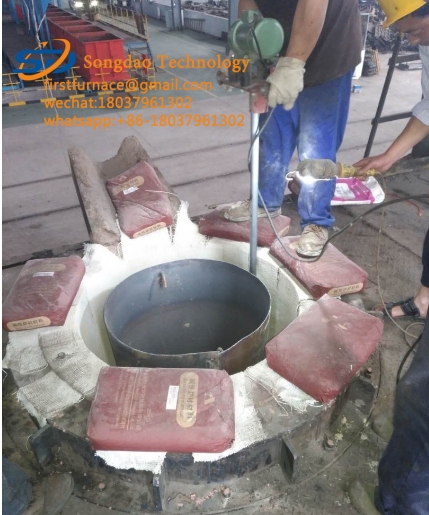- 23
- Mar
Common furnace building methods for induction melting furnaces
Common furnace building methods for induction melting furnaces
Common methods for building induction melting furnaces include wet knotting and dry knotting. Both methods can be used for knotting acid induction melting furnace lining, neutral furnace lining, and alkaline furnace lining.
Induction melting furnace wet knot tying refers to the knotting by adding water, water glass, brine and other adhesives to the lining knotting material. Because the knotted material contains water, there is less dust during construction and good formability. However, wet knotting also has a series of shortcomings: the lining material of the induction melting furnace is not dense enough, and the refractoriness of the lining is reduced; the drying time of the lining is longer; the moisture in the lining makes the reactor vaporize The insulation performance is reduced. Poor handling often leads to the breakdown of the turn-to-turn fire, and may also cause the furnace body of the induction melting furnace to be grounded. Therefore, for larger smelting induction melting furnaces, wet lining should be avoided as much as possible.
The dry furnace building method is now widely used. The dry induction melting furnace construction method without cement can maximize the refractory performance of the furnace lining material, so that the sintered layer of the furnace lining is thinned, the powdery layer is thickened, the heat dissipation loss of the furnace lining is reduced, and the tendency of furnace lining cracks is reduced and improved. The reliability of the furnace lining.

